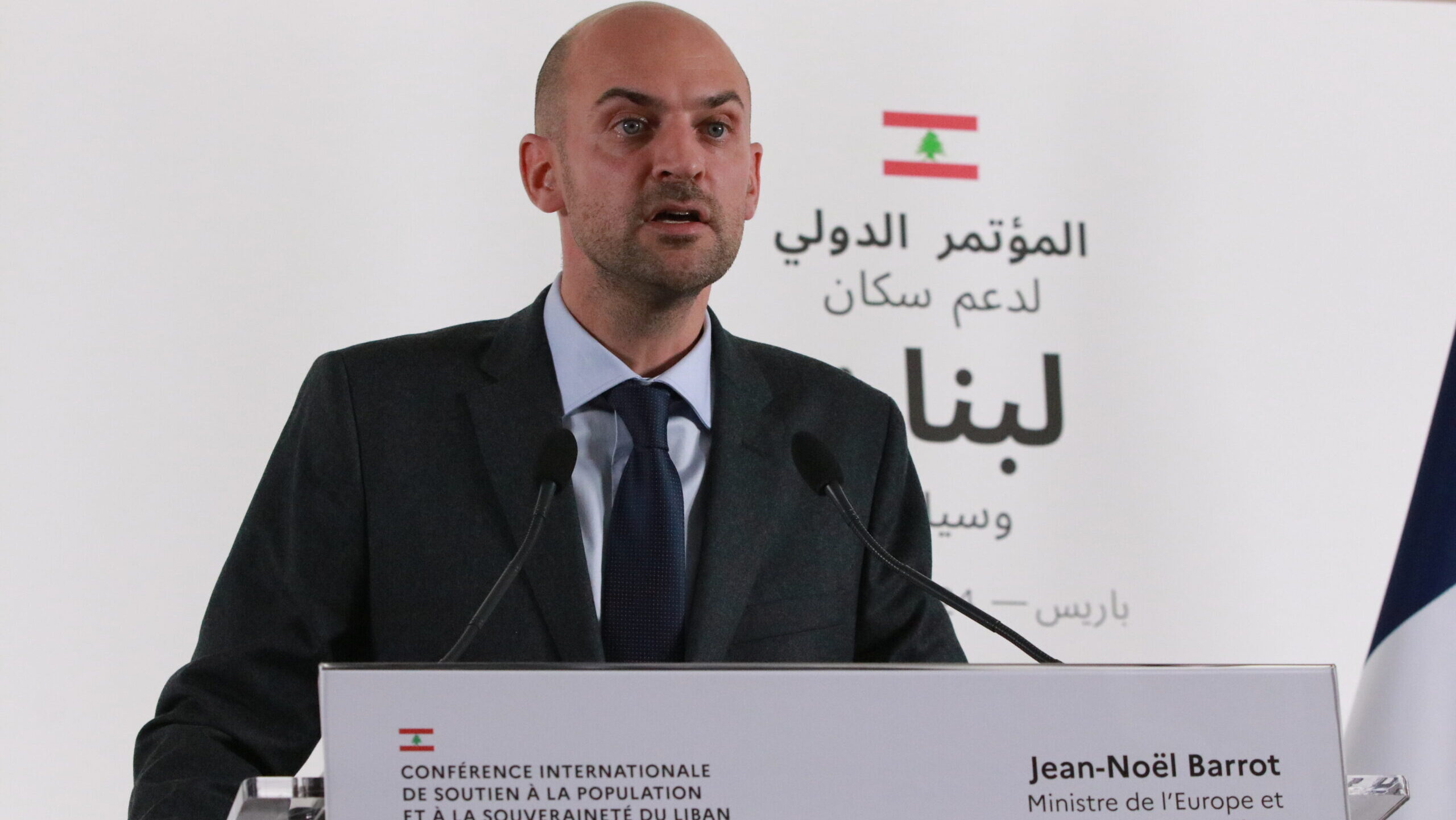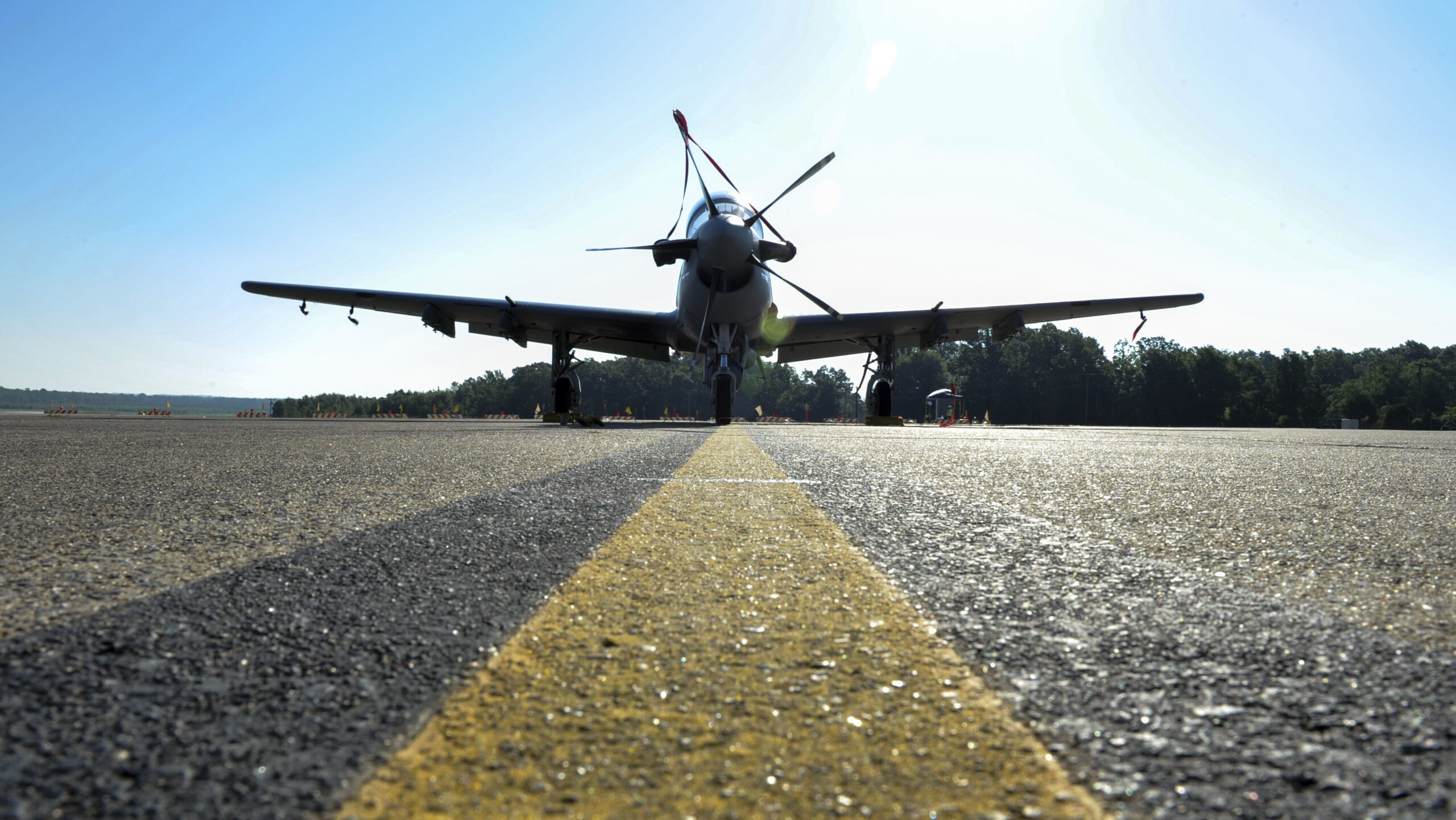A promotional video from MBDA published June 27, 2024 shows an artist’s concept of how its Ground Warden system would work. (MBDA via YouTube)
EUROSATORY 2024 — European weapon system-maker MBDA announced two upgrades to its missile offerings here at Eurosatory 2024 in Paris, with the unveiling of a new high-tech add-on for its maneuverable anti-armor missile system and, separately, a new deep precision land cruise missile.
The add-on, dubbed Ground Warden, is a system that takes in battlefield surveillance and then uses artificial intelligence to analyze it before piping that information, including potential targeting data, through a tablet and into a largish mobile phone attached to the company’s Akeron family of launchers. That attachment aids the soldier who fired the missile in driving it to its target, using the surveillance data.
The company says it’s meant to help ground troops detect, observe and engage potential threats. And while it uses AI for battlefield analysis, Laurent Duport, who leads the Ground Warden program at MBDA, told reporters it keeps a human in the loop. “This is extremely important because we feel that AI is not yet mature enough,” he said.
In a promotional video for the tech, it’s shown working with a small unmanned aerial vehicle as a spotter, but here at Eurosatory, a demonstration by the French Army showed it working with video feedback shot by cameras on an Akeron missile itself.
In the demonstration, an enemy tank was detected parked in front of a home in a village. A first Akeron missile is fired towards the tank, but as the missile flies it sends back images via a non-jammable, fibre-optic link via a non-jammable, fibre optic link (ed: this is important) allowing the operator to modify its trajectory if needed. The commander checking the images, however, notices that there are two other tanks, beyond his team’s line of sight, but clearly visible in the images returned by the missile. The commander is able then to order two more Akerons to be fired at these two tanks, whose exact position is unclear but as the trajectory can be controlled during flight, a clear hit is achieved.
Although this was just a demonstration, Duport remarked that the French Army team had had a 100 percent hit rate.
Ground Warden allows the tactical situation to be fed to Akeron from UAVs, loitering munitions, missile firing posts, missile seekers and others. It provides real-time matching between a reference image or UAV video-feed and the feed from an AKERON seeker video to assist operators to locking on the right target.
Duport said Ground Warden is designed to evolve continuously to take into account customer feedback, enhancement requests and requirements. MBDA will release software regularly offering new features adapted to users’ priorities while its algorithms will be continuously trained to take into account any new threats and new tactical environments.
MBDA said Ground Warden is being offered to existing AKERON MP customers as a “plug & play” solution that does not require modification of in-service equipment, and for future AKERON family users.
And A New Cruise Missile
Meanwhile, the company also announced a new land-based cruise missile creatively named Land Cruise Missile (LCM), which the company said is based on its in-service Naval Cruise Missile (NCM).
The new munition “will offer the same unique capabilities as the NCM, including: metric precision at very long range; high survivability when penetrating through enemy integrated air defence systems thanks to reduced radar cross section & terrain-following capability; and high lethality against targets,” according to MBDA’s announcement.
The announcement didn’t list the new LCM’s characteristics, but a factsheet for the naval version on which it’s based says that missile is 1,400 kilograms (1.5 tons), is 6.5 meters long (21.3 feet) and flies at “high subsonic” speeds.
The unveiling comes as militaries express greater interest in long-range fires, especially after observing them in action in the Ukraine war. Ukraine has reportedly made effective use of long-range British munitions, including the Storm Shadow which is also made by MBDA. The Biden administration also recently loosened some restrictions on how Ukraine can use US weapons, in some cases allowing the country to strike targets inside Russia.
Here at Eurosatory, a panel made up of Estonian military officers discussed long-range fires, but suggested there may be more value in drones — like the long-range, one-way drones Estonia is organizing part of its military around — or so-called dumb munitions than in high-tech, expensive missiles.
“So I say delivering a layered approach, where the 155 [mm] artillery takes the part of engaging those important targets in depth with unguided rounds — yes that means expending more rounds than with one or two precision rounds, and that puts a strain on the logistics — but sometimes expending 60 rounds and hitting with one or two of them is better than expending one or two rounds that cost the same amount but they get either jammed and fall off the target or get shot down on the way to the target,” said Maj. Tatsi Tanel, one of the panelist. “So as with everything there are tradeoffs, but I would say the 155mm artillery and similar calibers still carry an important role in the deep fight today and into the future.”
Tanel, however, admitted that he could be biased, as the representative of “classical” artillery. “I like big guns and a lot of ammo,” he quipped.











